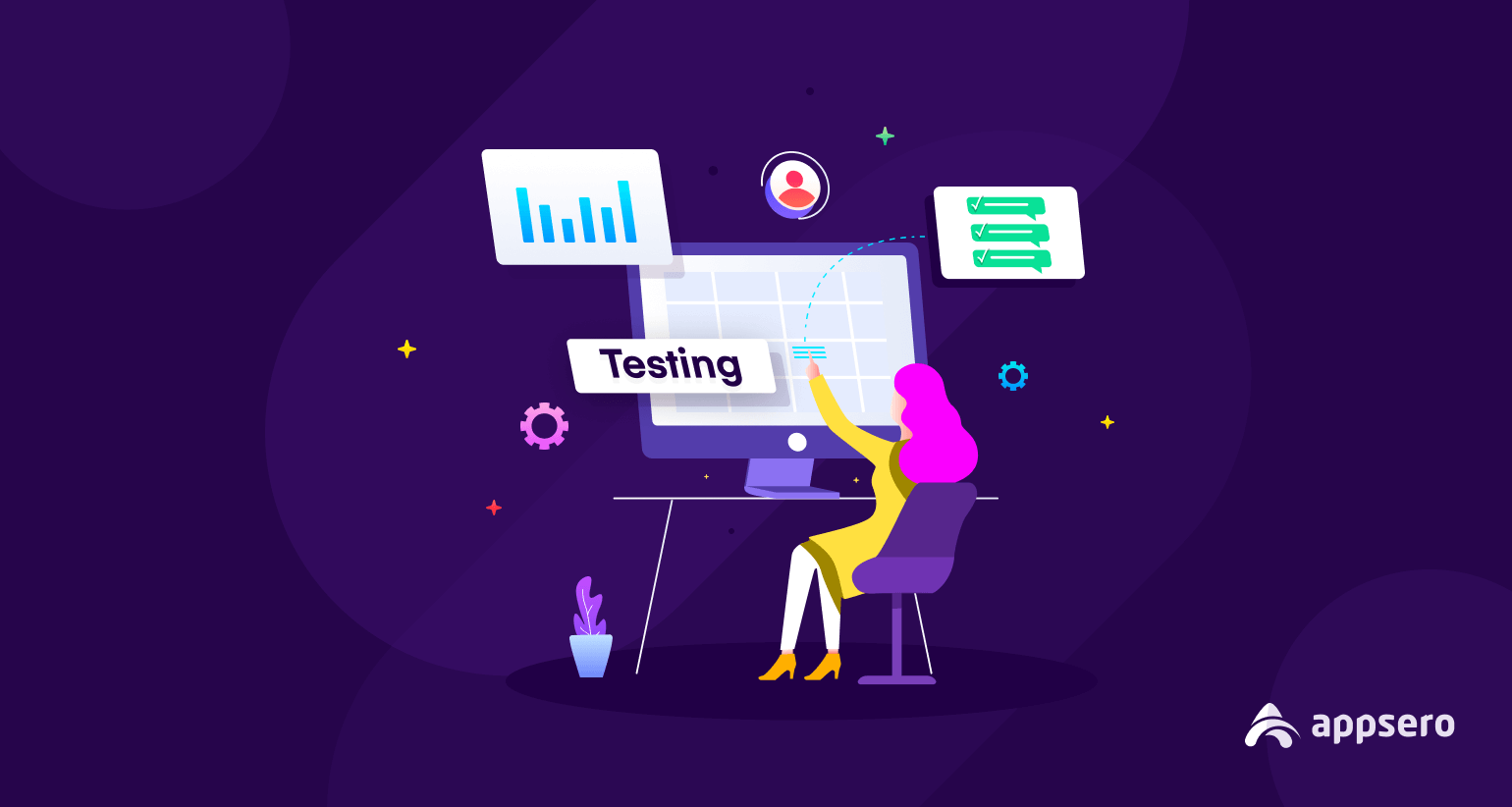
End to End Testing Best Practices (9-Step Guide)
Companies need to assure 100% working compatibility, security, and bug-free experience for their launched software. Any slight mistake can develop a negative impact on the user base.
So, to ensure the best possible products, developers use the end-to-end testing method.
Testers check every software element from top to bottom for any bugs.
The central purpose is to create an actual user scenario, construct artificial pressure on the system, and later collect the data.
In this blog, we will discuss the end to end testing best practices to make your job easier as a developer. Let’s start with the definition.
Table of Content
- What is the end to end testing process?
- 2 types of end-to-end testing methods
- How beneficial is end-to-end testing for a beta testing product?
- 9 steps to conduct an end-to-end testing
What is the end to end testing process?
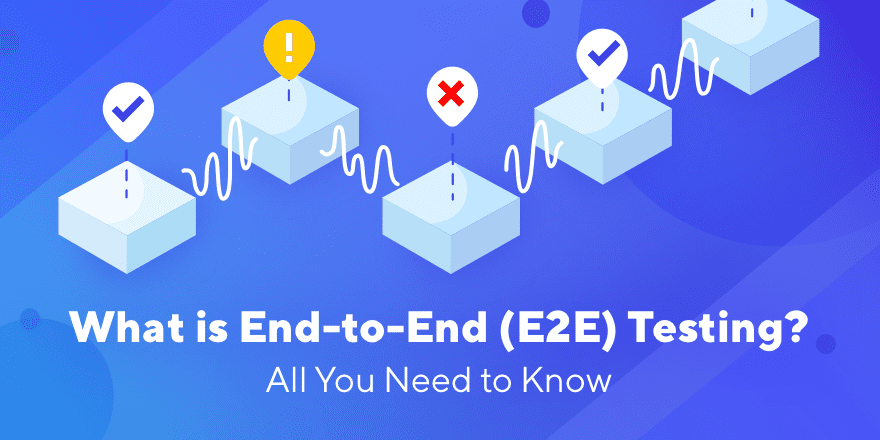
End to end testing is a checking process to extrapolate every possible outcome of software. In a word, end to end testing is the entire testing of a product.
Before launching a WordPress plugin or theme, developers inspected every detail. Keeping them unchecked may cause a big disaster later and will lose the marketing opportunities for that software.
To prevent that, you may run many tests and analyses to know how the product functions in a real-user scenario. The developer team can use the below components for the test-
- Transmission
- Hardware
- Network
- Database
- Other applications
Furthermore, to ensure 100% satisfaction, companies invite real-life users to participate in the BETA phase of the software. This technique may seem like a bad deal because of external interference.
However, real-user testing can help developers create a more exquisite and user-friendly product.
According to Cnet, Google solicits many students and experts to be part of their Google User Experience Research. You will get $75 an hour for your time in the testing with the developers. The testers will also have to take online surveys and answer questions on their digital device. Google used to utilize their employees family members for this testing.
An example of an end to end testing
You can take Email verification of a Gmail account as an excellent end to end testing example. See the below steps,
- Open a Gmail login tab via URL.
- Log into your account by providing the proper credentials.
- Inbox accession and checking emails.
- Write, read, or reply to an email.
- Reviewing the sent and spam folder.
- Checking every section email from primary, social, and promotions.
- Log out.
It is some of the most basic end-to-end testing best practices.
2 types of end-to-end testing methods
There are particularly 2 types of end-to-end testing methods that are used typically.
The Horizontal testing method
It is more common and regular around software companies. This testing process happens horizontally and consists of multiple applications.
The Horizontal testing method can occur over a single file ERP (Enterprise Resource Planning) application. A simple example can be a web-based application of an online eCommerce platform.
So many things are connected with a transaction, such as inventory status, account, product amount, type, and shipping details.
The Vertical testing method
The Vertical testing method is the all-in-one testing process. Every layer of the application is tested from top to bottom.
A perfect example can be the HTML-based web app that uses HTML codes for contacting servers. These applications require an API for generating SQL codes against the database. The moderation process of these complicated computing scenarios requires dedicated testing and accurate validation.
For its complexity, the Vertical testing method is connected with other testing methods.
How beneficial is end-to-end testing for a beta testing product
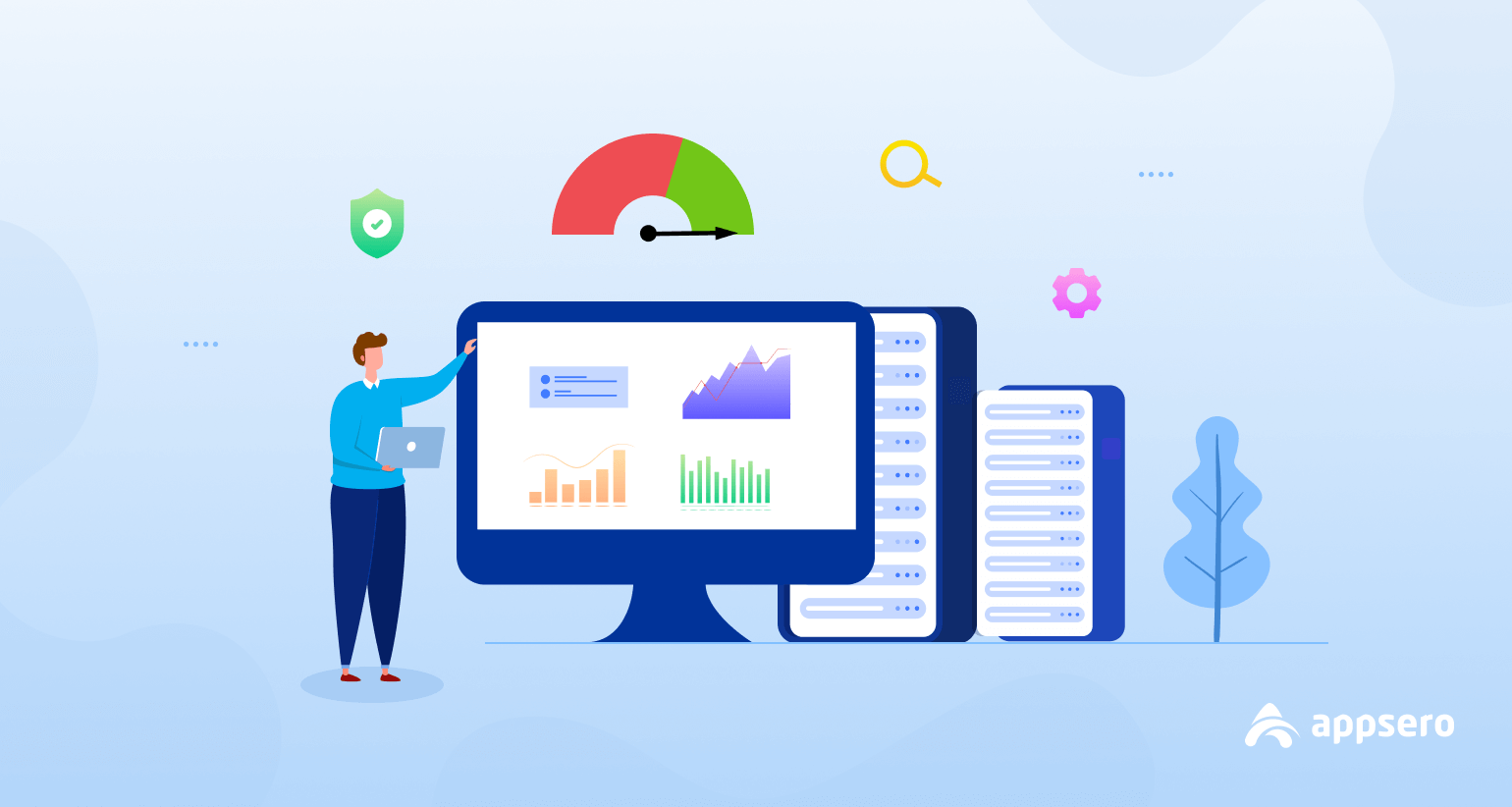
End-to-end testing comes after several testing processes like functional, system, and hardware testing. Testers prioritize these early testing processes so that the final testing result will be accurate. Moreover, they prefer properly described software testing reports.
Through end-to-end testing, you can ensure pretty much 99% error-free software or other projects for the clients. Here are some of the reasons why this testing process is preferable.
1. You can inspect the health of the back-end
Any online applications are connected to a database, ensuring that they can deliver correct information or features on demand. So the application’s core functionalities pretty much depended on the database.
Through end to end testing, you can quickly check this database layer. The entire process will help you specify the database and check if there is an issue with the program’s functionality.
2. Preview and analyze multiple environment-based applications
Some applications are developed under multiple environments like distributed, heterogeneous, and SOA. In that case, end to end testing permits you to pinpoint applications with many components because it implicates a 360-degree check every time.
3. App validation and behavior checking of multi-tier architecture & systems
Applications have many types of behavior and working flow that require additional checking. Through end to end testing, you can effortlessly check the over-complex architecture-based applications.
The process helps to test the application’s general functioning and reply over interconnected systems to pinpoint corresponding processes and behavior.
4. Focuses on user experience
End to end testing supports the back-end process and assists the front-end process and UI elements. Users will need to have the best experience possible, and the only way to ensure it is through smooth control over the system.
Hence this process will allow you to check the smooth interactions of the application and its consistent working under pressure on various platforms.
Every test process guarantees the best quality product and helps developers fix major application issues. For this, many complex software development companies always prioritize the end to end testing process first.
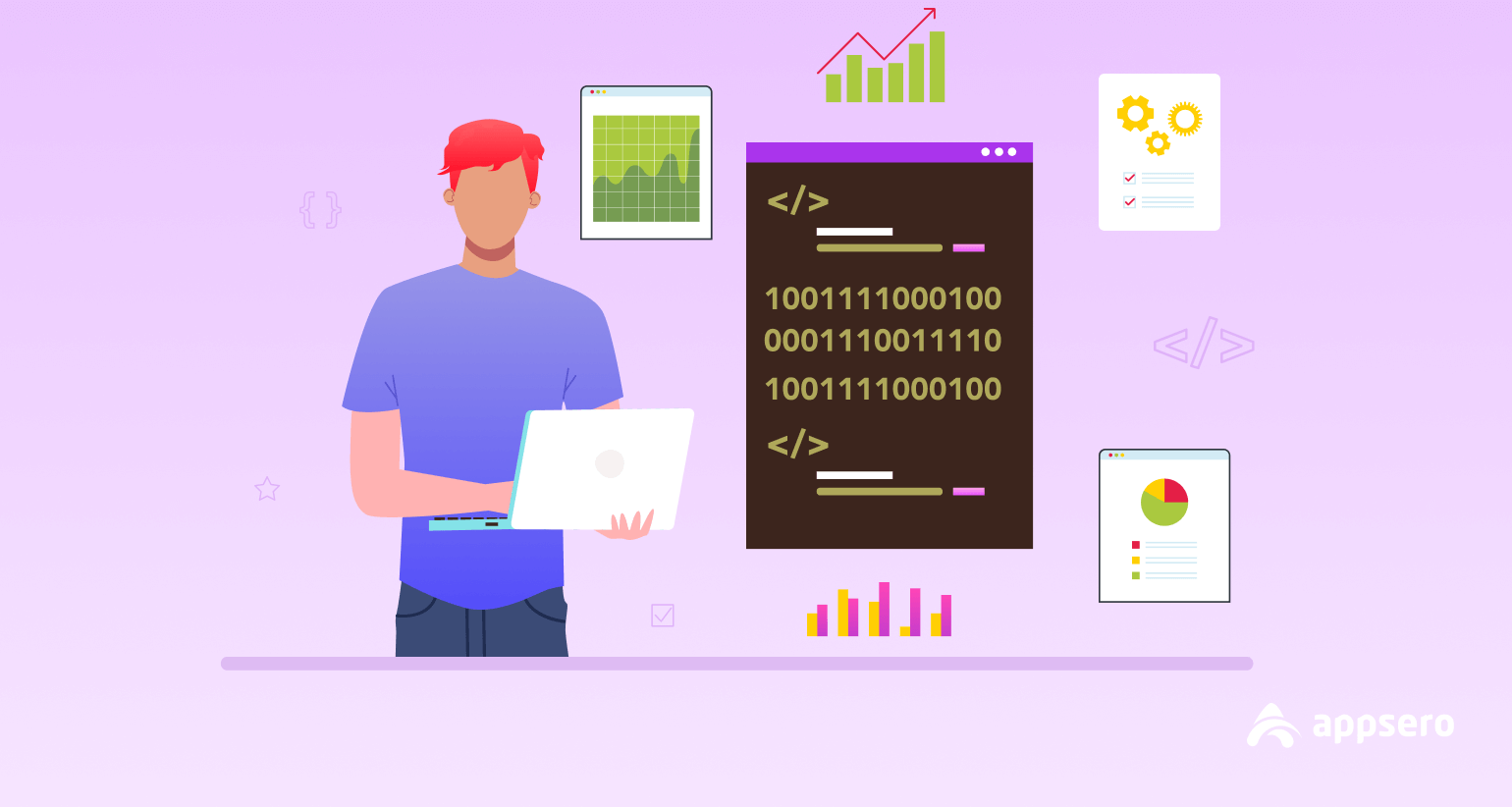
5. End-to-end process is a consistent testing method
An application may need to have various tests to determine whether the product is marketable or not. So, the testing process should always have to be repeatable and consistent from different transaction points.
The end to end process enables you to perform these checks in the above preferences. Moreover, you can also increase the coverage area of tests and the efficiency of the overall software performance.
6. End-to-end testing is better than Manual testing methods
Another preferable thing about end to end testing is, it’s more accurate and delays less than the traditional manual testing process.
In manual testing, the changes in a program or application’s repeatable moderation may cause delays. This delay can later generate risks, and system failure, and increase the overall cost. Thus, it takes more time than the regular end to end testing process.
So, manual testing can never be more precise, agile, and faster than the end to end testing process.
Steps to conduct a successful end-to-end testing
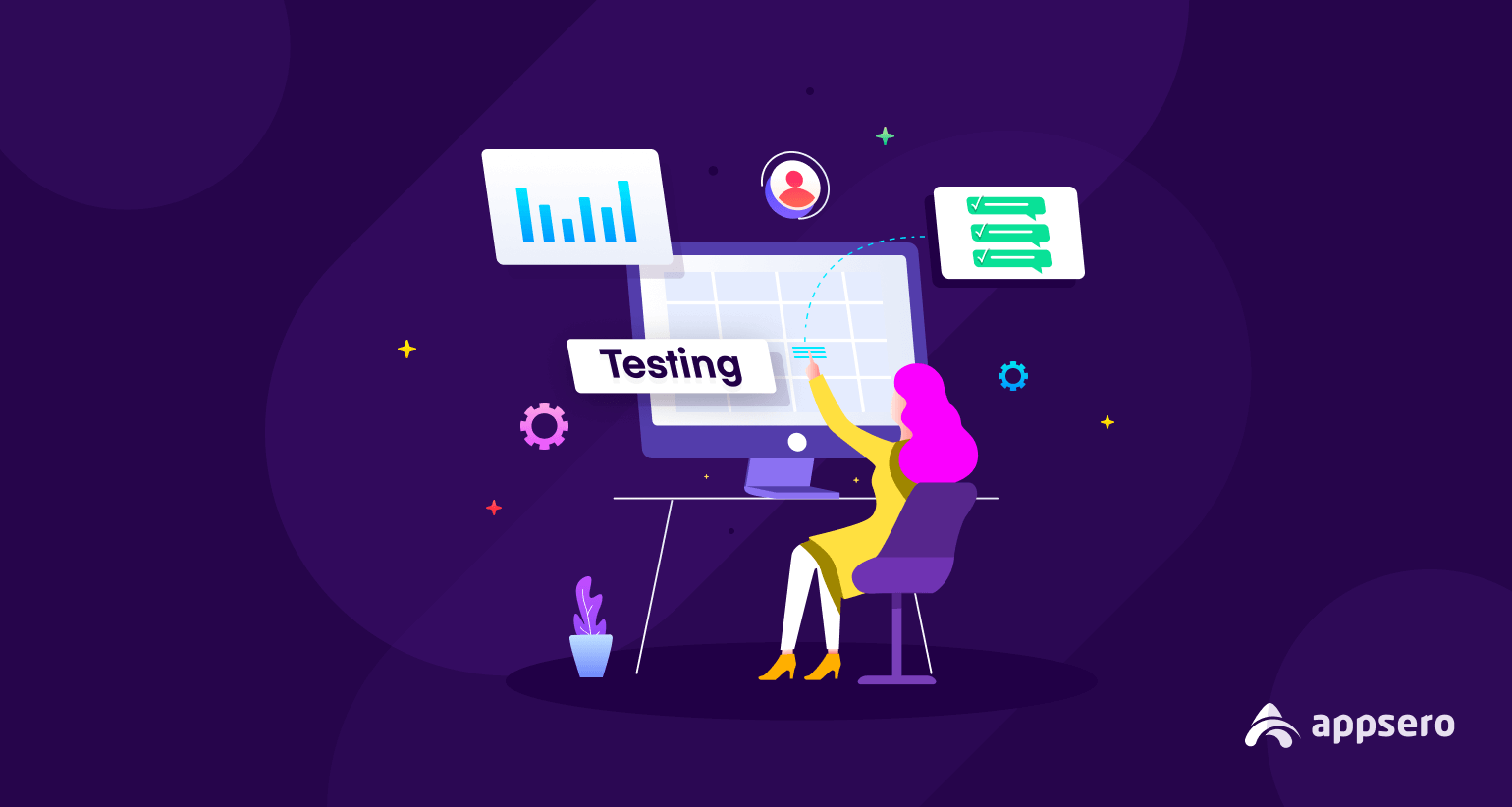
Below, you will see how to conduct an end to end testing and how it works. The steps will display the whole process accordingly.
Step 1: Have a clear cision of the work
This can also be called pre-visualization. Have an obvious picture of how every aspect of the system should work and proceed accordingly. This way if something doesn’t work right, you can fix it immediately.
Step 2: Create and manage a perfect environment for the tests
Your staging environment has to be ideal for the test cases. Always make sure that the system you are running the test, is up to date. Also, fulfill all the necessary conditions and collect documents before the testing starts.
It’s not easy to get everything, so sometimes the best solution is to follow the requirements of a production environment.
Step 3: Meet the software and hardware requirements
You will definitely need to have all the software and hardware to conduct the tests. Try to make a list of items you will use and collect them accordingly. Also, the budget is crucial too, in those cases, you will need to adjust.
Read More: Necessary Troubleshooting Rules for Developers
Step 4: Pre-record every respond
Create a list of responses that you feel are correct. The application’s responses need to be accurate in every way, or it will function incorrectly in a user’s hand. That is why testers create a list of responses before starting the end to end testing.
Step 5: Do everything in a precise order
An end to end testing phase will continually become difficult because many components are being added in the process. The debugging steps also become laborious. A quick solution is to do the easy tasks first and then continue towards difficult ones.
Executing the testing and integrations first, then solving the bugs should make the process faster. After starting the E2E testing, you should run smoke tests (prioritizing functional, critical, and crucial flow work) and sanity tests (determining that the system or build is stable enough to pass the next test).
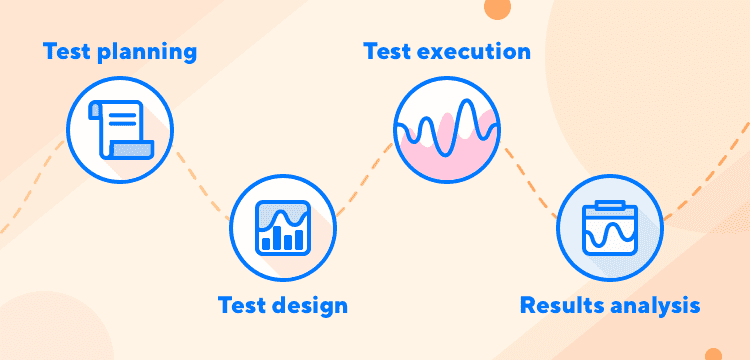
Step 6: Analyze your risk factors
The continuous process may have high risks and in later stages may cause failure. But, the problem is that you can predict any outcome of these risks. However, you can use the risk assessment matrix tool to cover this area.
Step 7: Make your environment operation ready
Teardown optimization is to make your environment always ready for subsequent testing. After finishing a test, clear all the test data and refresh the environment to its initial state. A restored environment is 24/7 operation ready and works more precisely.
Step 8: The end-user perspective
A customer can be the best tester for a product because they exactly know what they want and can provide the best feedback. So, think about how a user will use their phone. Prioritize practices feature and give less focus on functionalities.
Moreover, you can look back at the user stories and set up test cases accordingly.
Step 9: Save your results
Saving the results of the run tests will be particularly beneficial in later tests. Create a document of all previous tests, so that you can use them later.
Crucial metrics for end to end testing
These metrics will help in collecting the necessary data. Some crucial metrics to consider are:
1. Test preparation status: This metric tracks the progress of test preparation activities, such as test case design, test environment setup, test data creation, and test script development. It helps ensure that the necessary resources and artifacts are prepared in a timely manner, allowing testing to proceed smoothly.
2. Weekly description of test progress: You can get a high-level overview of the testing progress on a weekly basis. It includes information about the number of test cases executed, the percentage of test coverage achieved, any challenges or roadblocks encountered, and the overall status of the testing effort.
3. Detailed report of any bug: The detailed bug report includes information such as the bug description, steps to reproduce, severity, priority, the component/module affected, and any supporting attachments or screenshots. This helps facilitate effective communication between testers, developers, and other stakeholders for quick resolution of issues.
4. Tracking the Testing Environment: It includes monitoring the availability of required hardware, software, databases, services, and network configurations. Tracking the testing environment helps identify and resolve any environment-related issues that could impact the accuracy and reliability of the end-to-end tests.
5. Test pass/fail ratio: This metric measures the number of passed and failed end-to-end tests. It helps assess the overall system stability and the effectiveness of the testing process. A high pass ratio indicates a robust system, while a high fail ratio may highlight potential issues requiring attention.
6. Customer satisfaction: While not directly related to the testing process, customer satisfaction metrics can provide valuable insights into the overall quality and usability of the software application. Feedback from users or stakeholders can help identify any critical issues missed during testing.
These metrics can be tracked and analyzed to identify areas for improvement, optimize the end-to-end testing process, and enhance the quality and reliability of the software system.
FAQ on end to end testing best practices
1. Question: How beneficial is an end to end testing for a product?
Answer: For an end to end testing process, a product can be 99% secure, smooth, and offer all types of features to the customers. Moreover, continually performing end to end testing can improve the application’s performance after the BETA stages.
2. Question: Which types of test data are used in end to end testing?
Answer: 3 types of test data,
1. Valid data – these types of data are program acceptable and processable.
2. Extreme data – a type of valid data that is difficult for the system to process.
3. Invalid data – this data is unprocessable by the system.
3. Question: Is UAT similar to end to end testing?
Answer: No, the UAT (User Acceptance Test) phase is not similar to the end to end testing process. UAT is a software development process, on the other hand, end to end testing is a full-scale checking of an application.
4. Question: When should you stop end to end testing?
Ans: Here are some reasons for stopping the end to end testing,
-Insufficient budget.
– Insufficient time.
– If the tester team is hired for another test.
– Reaching the risk limit.
5. Question: How valuable is an end to end testing?
Answer: The requirements to complete an entire end to end testing are somewhat expensive. You will need an experienced tester team, dozens of hardware, paid web tools, etc.
6. Question: Is it necessary to automate end-to-end tests?
Answer: While automation is not mandatory, it is highly recommended for end-to-end testing due to its complexity and the need for frequent execution. Automated tests help increase testing efficiency, speed up feedback cycles, and enable better regression testing.
Ensure your software is working flawlessly with proper end to end testing
Take end to end testing as a last resort for your testing process. Design this testing process from the early stages of the product, and invest resources, time, and effort.
Doing it correctly will later lessen the chances of disruption and failure in the process. Completing the end to end testing phase perfectly can only assure the best possible experience for the user.
If you have any additional queries on the end to end testing best practices, then let us know in the comments.
Have a good day.
Subscribe To Our Newsletter
Don’t miss any updates of our new templates and extensions
and all the astonishing offers we bring for you.

That is a great tip particularly to those new to the blogosphere. Brief but very accurate info… Thanks for sharing this one. A must read article!